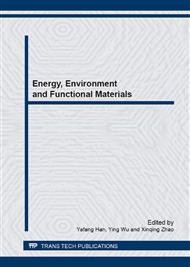p.76
p.82
p.92
p.97
p.102
p.106
p.111
p.117
p.123
Life Cycle Assessment of Steel Production
Abstract:
Based on life cycle assessment, analysis of energy consumption and other environment load by steel production in Chinese typical iron and steel industry was carried out. The process accounted for the most environment load was found by studying the different processes in steel production route. The results indicate that the most important process is blast furnace (BF) which is the major factor of CO2 and CO emissions, and contributes most to globe warming potential (GWP) and photochemical ozone creation potential (POCP).
Info:
Periodical:
Pages:
102-105
Citation:
Online since:
April 2014
Authors:
Keywords:
Price:
Сopyright:
© 2014 Trans Tech Publications Ltd. All Rights Reserved
Share:
Citation:


